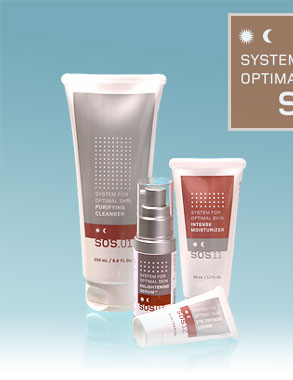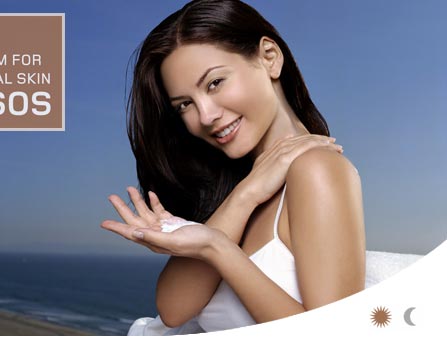The
Back of the Bottle (column #1)
Cathy in Vancouver recently asked me to give her some information
about melanin. Her clientele is increasingly concerned with hyperpigmentation,
and while she did know that melanin was responsible for the skin's
pigmentation, she was unsure of the exact mechanisms involved.
Produced in melanocytes by a chemical reaction of tyrosinase,
most natural melanins are a mixture of the two main types of melanin:
eumelanin, which is more common and produces a brown/black color,
and phaelomelanin that is less common and produces a yellow or
red color. Skin coloration or pigmentation may take two different
forms:
- 'Constitutive' skin color is pigmentation
generated without exposure to ultraviolet radiation (sunrays
or tanning beds) or hormone interaction – it is determined genetically.
- 'Facultative' pigmentation is inducible
pigmentation that occurs with exposure to ultraviolet radiation,
hormones, or inflammation. This hyperpigmentation is reversible
when the stimulus is removed or blocked. The controlling step
in the synthesis of melanin is the conversion of tyrosine to
'dopa' to melanin by the enzyme tyrosinase.
One of the major differences between the races relates to the
predetermined distribution of baseline melanosomes (melanin
molecules within the melanocytes) throughout the skin.
Melanin absorbs very strongly throughout the ultraviolet and visible
wavelengths of light. 'Constitutive' skin color is a protective
baseline mechanism, as constitutive melanin contains and absorbs
free radicals as well as all the damage incurred from all the ultraviolet
wavelengths of light (I do not think this is true).
We do not want to interfere with this baseline 'constitutive' pigmentation
on a prolonged basis, as we would be defeating the purpose of topical
anti-aging treatments. The function of melanin in the long term
affords protection against skin cancer.
Please
submit your questions by email to Ms. Zaborski at carell@advancedesthetic.com or
by fax to (780) 421-4434.
|

